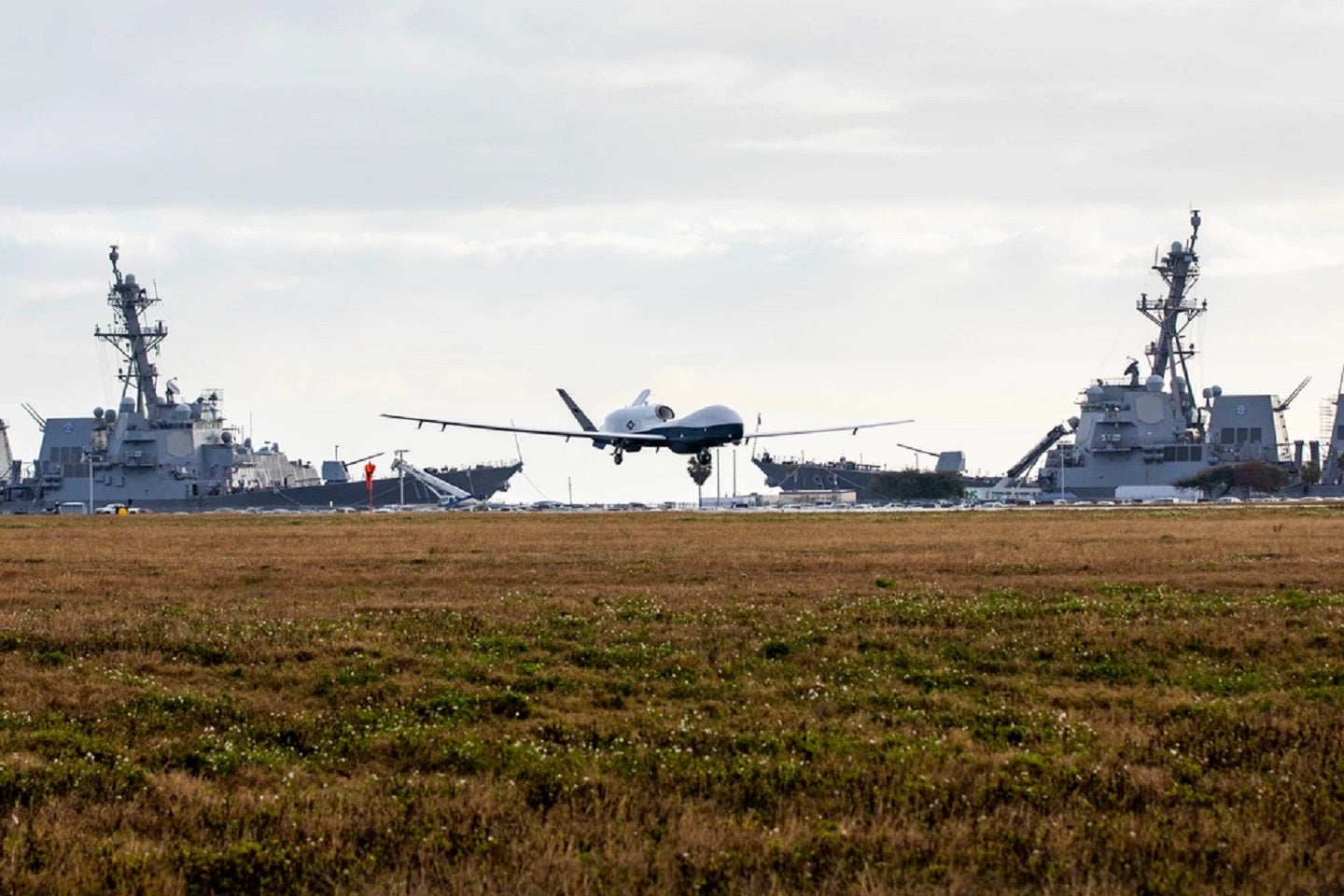
The war in Ukraine has demonstrated an ever-increasing reliance on uncrewed aerial vehicles (UAV). UAVs have proven indispensable in attritional zones of war where they have been used for a range of missions including spotting targets for artillery or strike aircraft, providing ISR for ground infantry and giving early warning of incoming enemy personnel, and continuously harassing enemy entrenchments from above.
But with the threat from the People’s Republic of China (PRC), and with Russia contained as a regional-level threat, eyes are turning to the Indo-Pacific theatre for the near future. This theatre of war will face a more adverse maritime environment that demands greater ISR capabilities.
Northrop Grumman’s MQ-4C Triton UAS provides capabilities that allow militaries with interests in the region to monitor oceanic activity ever more closely.
Based on Northrop’s Global Hawk UAS, Triton’s autonomous operations are supported by land-based command and control mission planners and sensor operators.
The MQ-4C can fly over 24 hours at a time, at altitudes higher than 10 miles, with an operational range of 8,200 nautical miles. The US Navy’s programme of record calls for 68 aircraft to be fielded.
Triton’s importance for maritime surveillance is demonstrated by the fact that the US Department of Defence (DoD) has awarded Northrop Grumman $57m for a modification to a previous contract on 14 March, 2023.
It will provide continued sustainment, engineering, logistics, and test support for MQ-4C Triton air vehicles, mission control, and operator training systems for both the US Navy (USN) and the Australian Government. The work is expected to be completed in March 2024.
MQ-4C integrated fleet
Australia received its first deployable Triton in September 2022. The country is a cooperative partner in the Triton programme and was critical in helping shape the requirements for the system.
As partners, the US and Australian defence forces will be able to share data collected by their respective Tritons, a critical ability in one of the world’s most strategically important regions.
Integration has been a key defence objective for the seamless consumption of actionable insight in operations. The Tritons are at the heart of the maritime ISR network for America’s coalition of allies in the Asia-Pacific region.
This is a valuable prospect considering the US has presented issues for its allies in its lack of communication and transparency, something the UK acknowledges in its report on the Special Relationship? The US, UK and NATO published on 7 March 2023.
Moreover, Northrop Grumman has also demonstrated its gateway technology in a flight test that proved the ability to connect airborne platforms with naval assets on 13 February, 2023.








